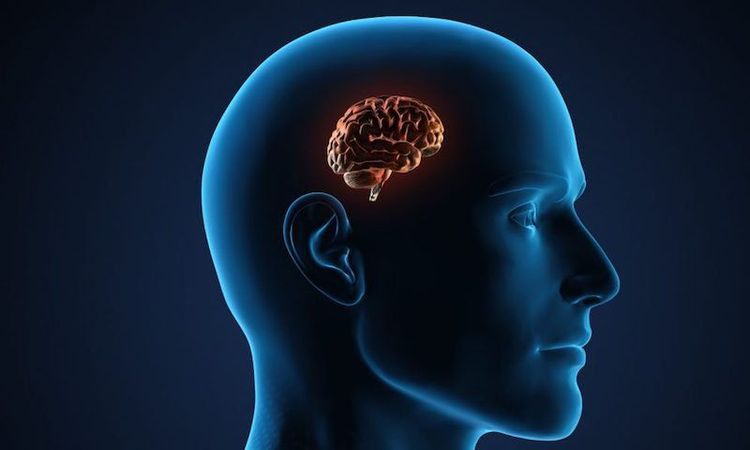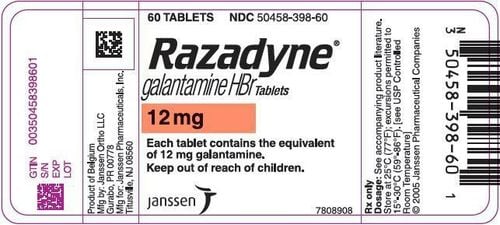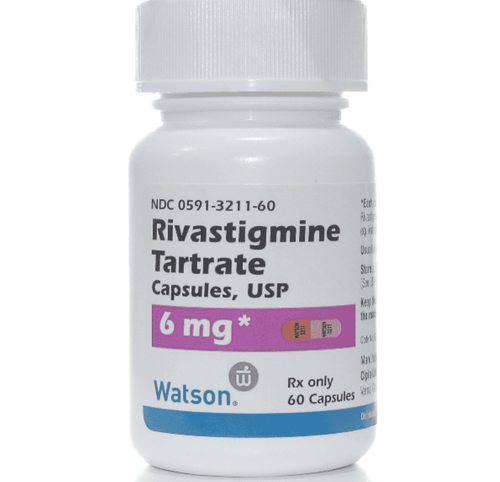This is an automatically translated article.
Understanding the link between brain shrinkage, age, and Alzheimer's disease is important. Because Alzheimer's disease often manifests outward symptoms when people begin to age. While age and Alzheimer's are independent processes, they affect the brain at the same time.
1. Brain Atrophy and Alzheimer's Disease Overview
Age is the most important risk factor for Alzheimer's disease. With a marked increase in prevalence between the ages of 65 and 85, Alzheimer's disease atrophies in the primitive cortical regions and the limbic system with the medial temporal lobe. The endothelial cortex and hippocampus are susceptible to atrophy, where hippocampal volume declines at a rate of 4-6% per year with Alzheimer's disease. Through magnetic resonance imaging, the brains of normal people and people with Alzheimer's disease at different levels will have different sizes and shapes. Progressive worsening of cerebral atrophy and loss of brain mass manifests in enlarged cortical fissures and fissures.
However, Alzheimer's disease develops in the context of normal aging, and the brains of older adults without dementia still have lower brain weight, reduced tissue volume, as well as dilated ventricles and brain folds. As we age, nerve cells are lost in the neocortex, hippocampus, and cerebellum. Neurons contract and repair DNA suboptimal, leading to impaired neuronal integrity and synaptic density. Therefore, age is thought to increase the risk of Alzheimer's disease, as it is independently associated with brain atrophy.
2. Age-related brain atrophy and Alzheimer's disease
2.1. Based on the studies A study was conducted with the aim of identifying specific gray matter areas that are affected independently or simultaneously by normal aging and brain atrophy caused by Alzheimer's. In other words, the researchers would identify areas of gray matter that are:
Affected only by normal aging Only affected by Alzheimer's Disease Affected by the combination of aging and Alzheimer's disease. The results showed that, with increasing age, gray matter volume was lower in the areas of motor association and force support in the frontal, temporal, occipital, and parietal lobes, as well as in the cerebellum. Furthermore, cerebral impairment has also been detected in the posterior hippocampus, thalamus, and medial gyrus. In contrast, in subjects with Alzheimer's disease, atrophy was observed in the anterior hippocampus/temporal gyrus V and the quadrilateral lobes. It is not possible to determine whether brain decline in the hippocampus and enteric cortex is due to normal aging or Alzheimer's disease.

Tuổi cao có liên quan đến tình trạng teo não và bệnh lý Alzheimer
2.2. Discussion There were 3 important findings in this study:
First, age-related gray matter atrophy occurs in the upper and lower tentacle structures, as well as the major areas of motor, sensory, and integration connectivity. . Second, Alzheimer's disease-associated brain atrophy targets the anterior hippocampus and quadrilateral lobes, occurring relatively early in subjects with clinical manifestations of the dementia syndrome. Third, Alzheimer's-induced brain atrophy persisted in regions that would vary specifically with age, while significant overlap was found in the hippocampus. Importantly, study subjects remained cognitively normal for at least 5 years after their brain scans. That is, the loss of gray matter volume due to normal aging is not due to neurodegeneration.
The association between age and Alzheimer's-induced brain atrophy in the medial temporal lobe suggests an impact by both processes. The hippocampus is independently affected by both age and Alzheimer's disease. This could explain why age is a major risk factor for Alzheimer's disease. In particular, age is strongly associated with important brain regions affected by Alzheimer's disease. Therefore, efforts to reduce aging-related brain atrophy, especially in the medial temporal lobe, may reduce the risk of Alzheimer's disease.
In terms of aging concepts, some studies suggest that aging is a distinct process that causes changes in brain structure on its own. While other studies have shown that age does not cause changes in the brain, it is conditions common with aging (eg, cardiovascular and cerebrovascular degeneration) that lead to brain aging. For example, it has been reported that elderly individuals without dementia and hypertension have lower resting cerebral blood flow than those without hypertension.
Many normal people over the age of 75 still experience cognitive effects of aging, decline in the brain related to areas that connect motor, sensory and information integration, as well as the cerebellum. The sharp aging-associated atrophy in these areas, particularly the cerebellum, may reflect alterations in visual, sensory, and motor functions in the elderly. MRI analysis of brain structure revealed that the widespread loss of gray matter with aging was strongest in the hippocampus and overlapped with Alzheimer's disease.
In summary, aging-related brain atrophy has been observed in the superior and subtentorial structural regions, as well as in the basal motor, sensory, and integumental regions. Age and Alzheimer's disease cause gray matter atrophy in separate regions independently, but these effects overlap substantially in the hippocampus and enteric cortex. As such, delaying or correcting brain atrophy in older age could also delay the onset of dementia, avoiding changes to the structural integrity of the brain.

Teo não ảnh hưởng nghiêm trọng đến tình trạng sức khỏe và đời sống của người mắc phải
With the negative effects of brain atrophy and Alzheimer's disease on health, early detection and treatment of the disease is essential.
Regular health checkups are the most effective way to screen for Alzheimer's disease, brain atrophy or dementia, even if there are no symptoms of the disease. Currently, Vinmec International General Hospital is implementing a general health checkup package for all subjects and different ages. With each type of examination package, customers will be screened and screened by a system of modern equipment to help support the best diagnosis today such as PET/CT, MRI, CT 640, ultrasound system. The world's leading advanced technology, international standard laboratory system,... After the general examination, if any diseases are detected, the customer will be consulted by the doctor on the use of drugs, diet, lifestyle that fits your current health in the best way.
Please dial HOTLINE for more information or register for an appointment HERE. Download MyVinmec app to make appointments faster and to manage your bookings easily.
References: mayoclinic.org - ncbi.nlm.nih.gov












